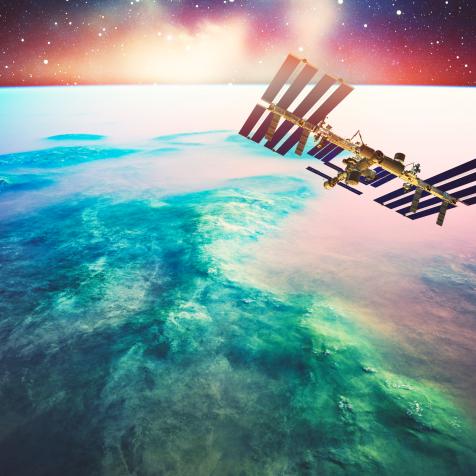
NASA
Do Giant Water Worlds Host Alien Life?

We all wish we could find an Earth 2.0 – a planet about the size of our own, made of roughly the same chemical mixture, orbiting a sun-like star at just the right distance so that all its water doesn’t evaporate or freeze.
We want to find an Earth 2.0 because it would be a prime candidate to host Life 2.0. Life originated on our planet, and so if we want to know how common life is in the universe, our safest bet is to find out how common Earth-like worlds are.
But the safest bet isn’t always the most rewarding one.
It turns out that Earth-like worlds are relatively rare (or at least, difficult to detect with our current methods). A much more common planet is known as a “mini-Neptune”, which as the name implies is a slightly smaller version of the giant planet found in our own solar system.
You might think that giant, gassy globes would be the last place to look for life, but the creativity and imagination of astronomers knows no bounds. One group has proposed that a certain type of mini-Neptune might be rich in liquid water oceans…and rich in life.

NASA
They’re called Hycean worlds. It’s pronounced “HI-shun” because it’s a portmanteau of “hydrogren” and “ocean”. The gist is that a giant planet might have a sufficiently thick hydrogen atmosphere (like, a thousand times thicker than the Earth’s) that it acts like the lid of a pressure cooker, keeping liquid water on the surface nice and contained for billions of years.
And since giant planets tend to have a lot of everything, Hycean worlds could contain enough water to completely engulf themselves in a world-girdling ocean.
The Hycean worlds could have any distance from their star. Close up, things would get hot and steamy, like a Louisiana swamp. Worlds more distant from their star might more resemble the Arctic.
Either way, as long as there’s liquid water, there’s the potential for life. And here’s the wild thing about (still hypothetical) Hycean worlds: it might be easier to detect life on those worlds and Earth-like ones.

NASA
It all comes down to that thick and juicy atmosphere. It’s extremely difficult to directly observe planets orbiting other stars. Instead, we wait for the planets to cross the face of their parent star, causing a mini-eclipse and dimming the light that we see on Earth. During that crossing event, a tiny fraction of the starlight passes through the alien planet’s atmosphere.
All the chemicals and molecules and elements in that atmosphere change the nature of light, which is something we can observe from the Earth. We can then look for chemical signs of life, like lots of oxygen or methane. And since Hycean worlds have truly gigantic atmospheres, and we know where some candidates are already (unlike Earth 2.0), we have a chance of measuring this with the soon-to-launch James Webb Space Telescope.
As early as next year, we might be getting signals from some watery friends.
Dive Deeper into the Cosmos
Journey Through the Cosmos in an All-New Season of How the Universe Works
The new season premieres March 24 on Science Channel and streams on discovery+.




















